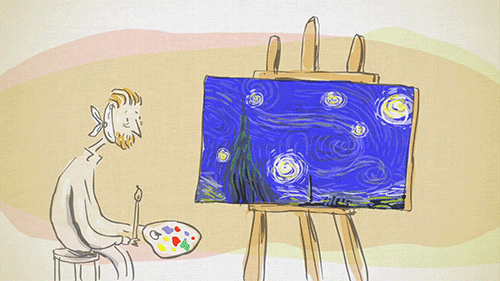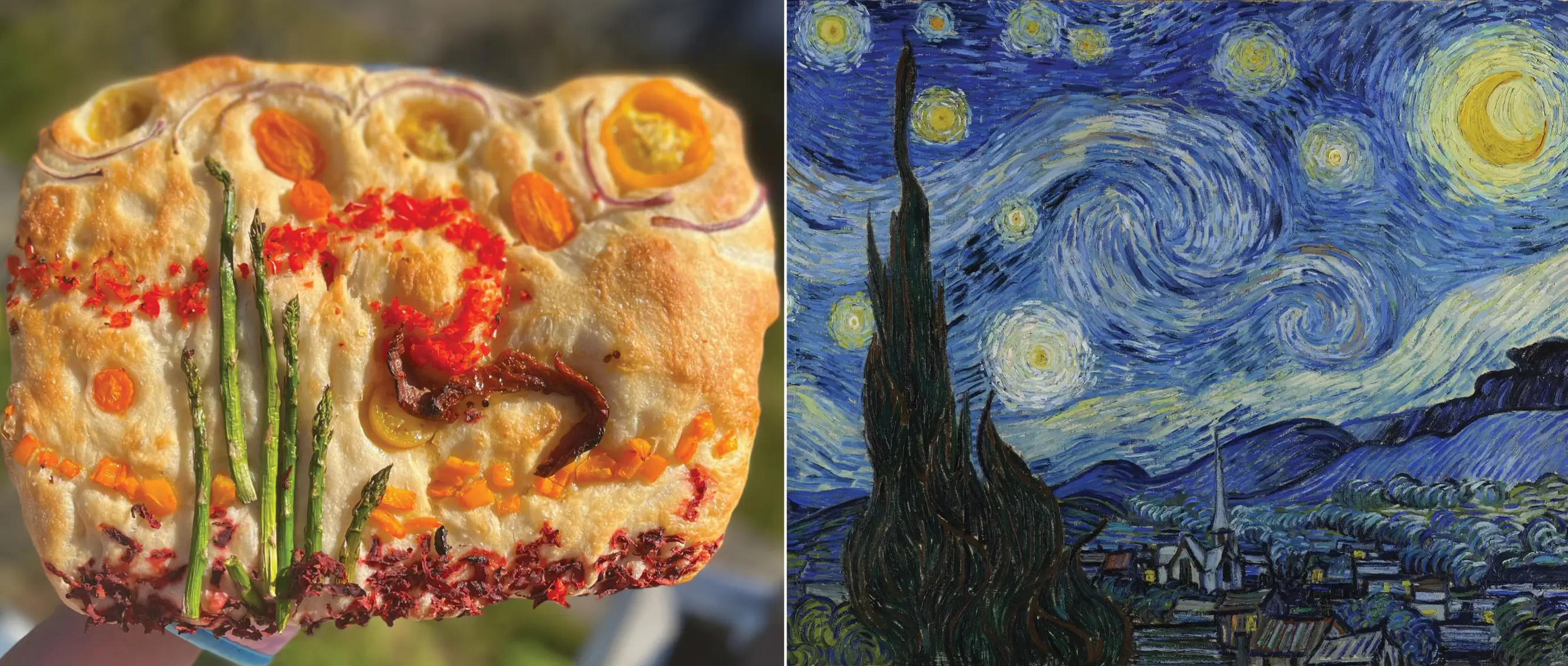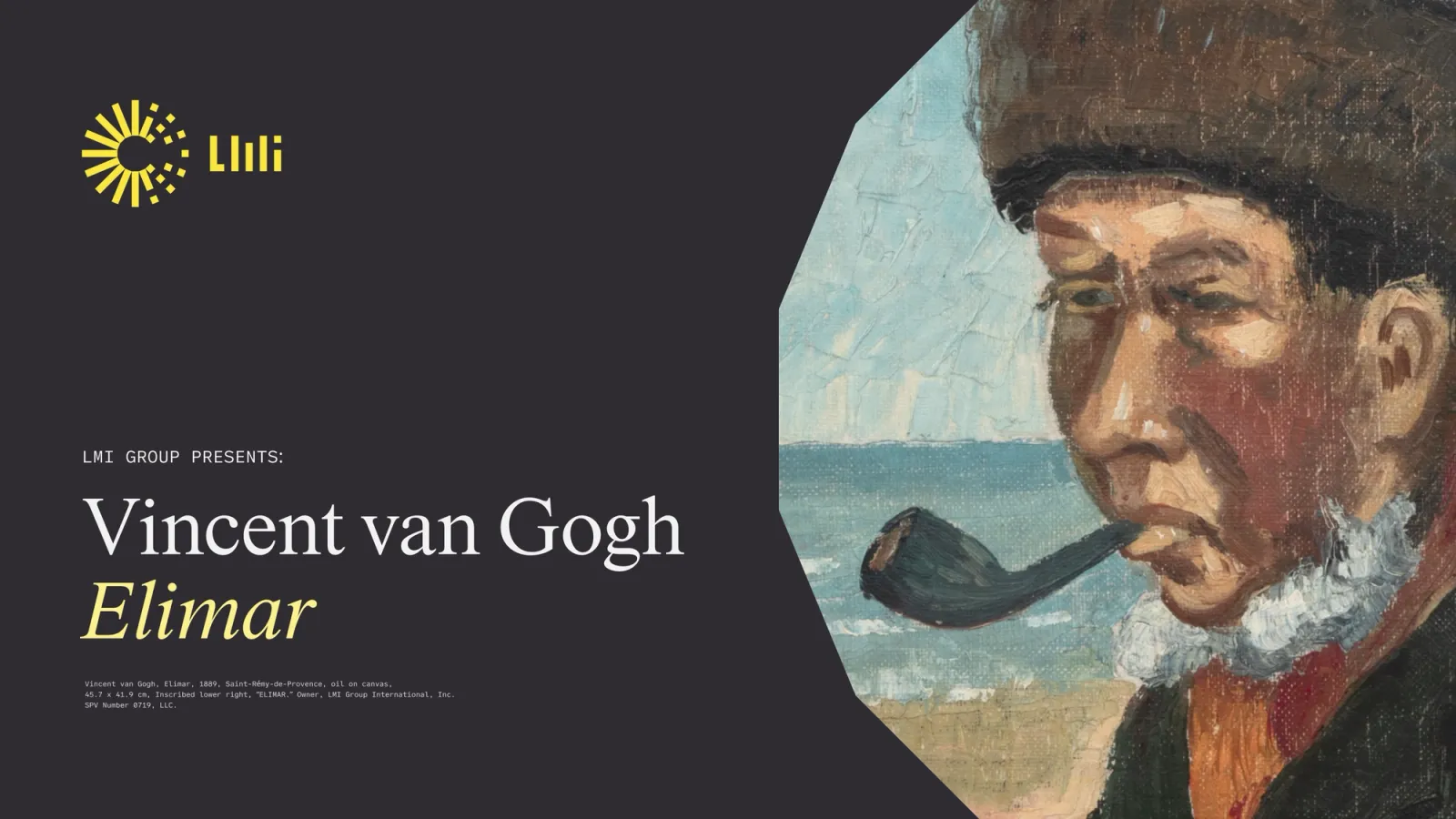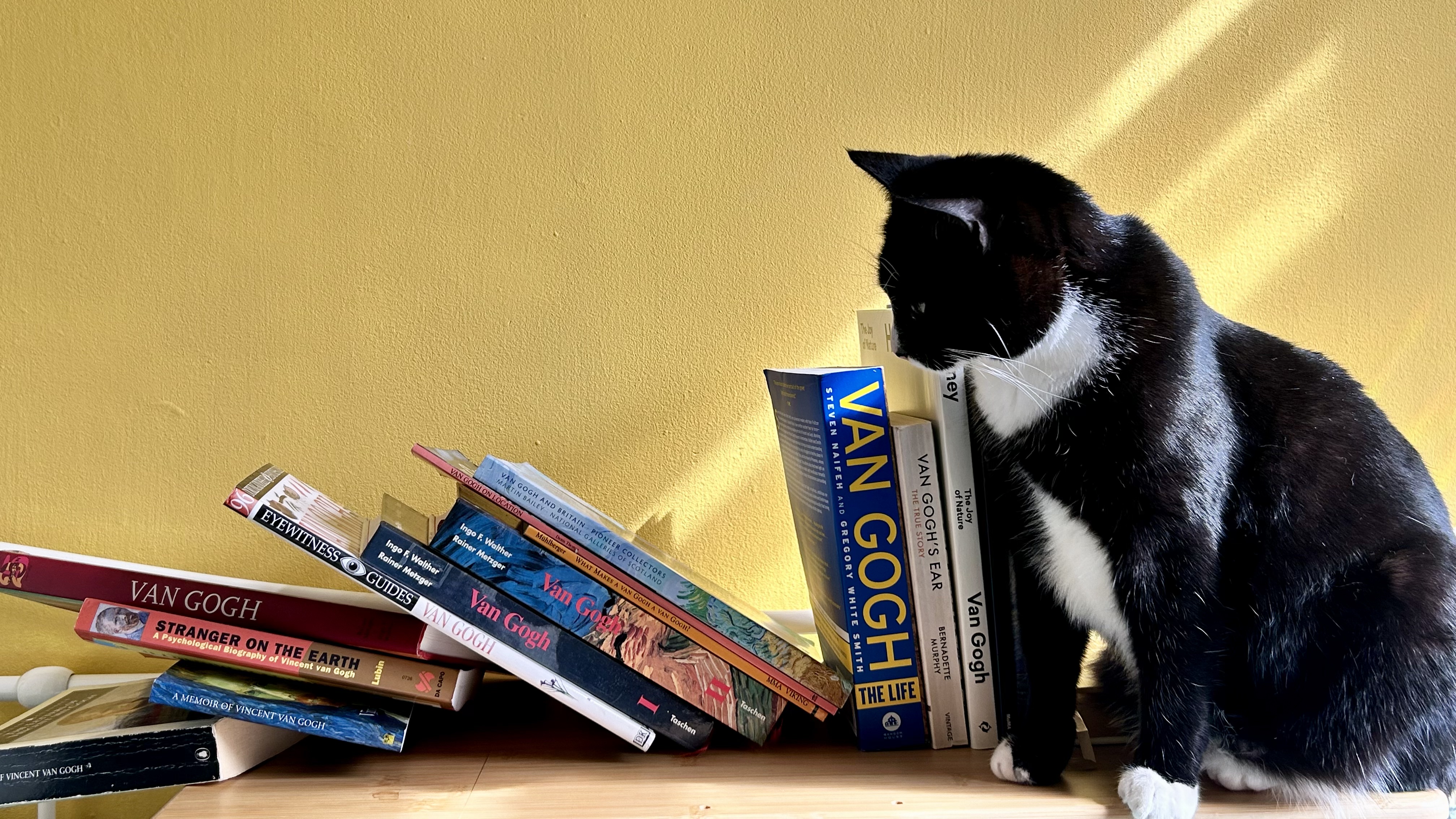Van Gogh Rabbit Holes
Interesting discoveries unearthed on my Van Gogh journey are added here as small rabbit holes, that others may find equally interesting and for potential follow-up later.
May 24, 2025
A Letter from Vincent
Receive 'A Letter from Vincent' using AI: write your own letter, or ask for his art advice, and prepare to be moved
Mar 30, 2025
Van Gogh’s Life in February: Key Moments, Artworks & Letters
Explore Van Gogh’s February milestones – from Theo’s birth to Arles and Saint-Rémy, faith, illness and inspiration.
Continue reading "Van Gogh’s Life in February: Key Moments, Artworks & Letters"
Mar 30, 2025
Comparative Timeline of Van Gogh's Life: March Over the Years
Van Gogh’s March timeline: Key life events, art, and letters from year to year.
Continue reading "Comparative Timeline of Van Gogh's Life: March Over the Years"
Feb 12, 2025
Why Do Van Gogh’s Paintings Seem to Move?
Ever wondered how Van Gogh's paintings like Starry Night seem to have movement? Research has shown that "paintings from Van Gogh’s period of psychotic agitation behave remarkably similarly to fluid turbulence", and paintings from his calmer periods do not, and neither do paintings by other artists with similar issues, such as The Scream. Furthermore he has managed to convey one of mathematics's most difficult problems through art and paint.
This is an amazing video, and it's nice and short but there's so much to take from it, plus it's maths-based, so my main takeaways are:
Van Gogh’s Art & The Science of Light -
- Van Gogh used circular brushstrokes to create swirling stars and clouds in a night sky for The Starry Night, which makes it feel alive and as if the sky is moving.
- His painting can feel alive as if the sky is moving.
- Unlike older artists, Impressionists tried to show how light moves, painting sunlight shimmering on water and starlight glowing in the sky.
- Van Gogh unknowingly visualised one of physics' greatest mysteries.
- His perception of movement, light, and fluid was scientifically accurate.
- Hubble Telescope images of space clouds resemble The Starry Night.
- Scientists found turbulence-like patterns in Van Gogh’s paintings.
How Our Eyes See Light in Art
- "Luminance" is the brightness of colours in a painting.
- Our brain processes light and motion separately from colour.
- If two colours have the same brightness, our eyes blend them together.
- A deeper part of our brain detects contrast and movement, while another part sees colour.
- When these parts process a painting differently, the light seems to flicker and pulse and hence we interpret that as movement.
- Luminance tricks our brain into seeing flickering and radiating light.
So, to make paintings feel more alive and dynamic, Impressionist painters used quick, bold brushstrokes to try show the motion of light across surfaces.
In Van Gogh's case though this ability seems related to his mental state too, which is fascinating.
"Van Gogh was somehow able to perceive and represent one of the most supremely difficult concepts nature has ever brought before mankind" - that's quite the endorsement!

Feb 11, 2025
Van Gogh's Starry Night Bread Art
Part of the reason behind Van Gogh Everything! is to find and showcase Van Gogh-inspired curiosities - this tasty-looking bread art, painted with asparagus, peppers and tomatoes, caught our eye whilst going down a rabbit hole connected to the Elimar post

Students at the University of British Colombia recreated famous works of art - check them out, there's some brilliant recreations and aside from Van Gogh, I think my favourites feature a black cat, hand sanitiser and Yoda from Star Wars making an appearance!
Feb 08, 2025
Lost Van Gogh Painting? Controversial Report into a $50 Garage Sale Find
Is this a lost Van Gogh or is it by another artist? The painting of the fisherman - titled 'Elimar' - was originally bought for $50 at a garage sale in 2016 and then sold to an art data science company who have provided extensive evidence that it's a lost Van Gogh, but the Van Gogh Museum disagrees.

Elimar is thought to be an artist copy of a painting by Danish artist Michael Ancher, painted whilst Van Gogh was staying at the asylum in Saint-Remy. Over 4 years, a team of 20 experts analysed pigments and brushstrokes and delved into Van Gogh’s work from the late 1880s, where he produced many artist copies. The researchers were satisfied that the painting was an authentic Van Gogh, potentially worth millions:
- Compositional similarities to Van Gogh’s known paintings.
- Use of a late 19th-century pigment palette, Geranium Red being important.
- Evidence of pentimenti, showing changes made during the painting process.
- Canvas thread count comparable to other works by Van Gogh.
- A single red hair embedded in the paint, matching the era.
However the Van Gogh Museum isn’t convinced. After reviewing the evidence, they concluded that Elimar is not a Van Gogh painting.
It has been suggested instead, that this painting could be by another Danish artist Henning Elimar, since the name “Elimar” is right there on the canvas, plain as day like a signature. Although the report does consider other possible painters of the image, the report addresses this obvious issue by proposing:
- It's a fictional representation of Van Gogh as an older version of himself.
- Elimar is a literary reference to a Hans Christian Andersen character of the same name.
- Intricate mathematical analysis comparing the 'signature' to other examples of Van Gogh's writing on paintings.
Judge for yourself - it's an interesting report providing evidence that this is a Vincent van Gogh painting, and if nothing else, it helps demonstrate "what makes a Van Gogh a Van Gogh":
"Elimar Returns: A Newly Identified Work by Vincent van Gogh (1853-1890)"
Will there be an in depth analysis of Henning Elimar's other paintings to see if they 'fit' this painting...
Jan 24, 2025
Comparative Timeline of Van Gogh's Life: January Over the Years
Explore Van Gogh's Januarys, how life evolved from one year to the next, through his life, art, and struggles
Continue reading "Comparative Timeline of Van Gogh's Life: January Over the Years"
Jan 24, 2025
Van Gogh's Wiggly Stars - Kid POV on TV's Outnumbered - @VanGogh Mention
A funny gem for the 'cultural references' rabbit hole I enjoy going down: watching re-runs of Outnumbered when our very own Vincent gets a scathing review from Karen.
The translation:
Karen: That was modern art?
Mum: Yes, darling.
Karen: It was rubbish.
Mum: What?
Karen: There was bits of carpet stuck to the walls, there's just some painting...
Mum: That's quite interesting.
Karen: A globe in a fridge?!
Mum: Well, something like that means, look at what we're doing.
Karen: It's a globe in a fridge.
Mum: Yeah, but it's quite a clear representation of global warming.
Karen: But they've got a light on in that globe, which is actually making it worse, isn't it?
Mum: Only in the globe, 'cos the fridge isn't on.
Karen: It doesn't even look good.
Dad: Well, I agree with you, Karen. It's not proper art. Not like the pictures we saw in the National Gallery.
Karen: Well, the National Gallery was rubbish, too.
Dad: What about the lovely Van Gogh's?
Karen: It was all wiggly, and he should have gone over it. And the stars were all wiggly and sprouty. It was like he was crazy or something...And it had nothing to do with World War II [the point of the trip to London]
Mum: She wasn't impressed with any of it. Turner, too blurry. Monet, too spotty. Rubens, too many fat girls. Rembrandt, not enough cats."
Can't argue with the cats.
Nov 03, 2024
Digital Collage with Pinterest, a Major Creative Rabbit Hole
"Admire as much as you can. Most people do not admire enough"...well I certainly spent enough time admiring on Pinterest this weekend!
Had no idea you could create digital collages from ready-made digital 'cutouts' and your own cuts from your own pictures (and even other people's pins which I'm not sure about the ethics of if it's hand-crafted artwork).
Anyway, I stuck to Van Gogh's digital cutouts, namely flowers and grassy paintings, and various rabbits to illustrate the point (another secret love of mine is medieval animals in illuminated manuscripts, especially rabbits and cats...and of course, the jousting snails).
I am quite pleased with my very first digital collage - I now have several more as I figure out ways to use them.
So, whilst you can create some fabulous new Van Gogh-inspired things with AI, and get a buzz from the generative magic, creating a digital collage is you being hands-on creative: you're investing in some quality creativity, which is good for you and your brain.
Prescription: Take 1 dose of creativity, for 20 minutes a day.
Oct 21, 2024
Explore books about Van Gogh - for Beginners & Deep Dives
Hand-picked books about Van Gogh that appeal to beginners and deep divers, in the order they were written and on budget
Continue reading "Explore books about Van Gogh - for Beginners & Deep Dives"
Oct 15, 2024
Van Gogh & Autism
Found an interesting paper from 2022 on signs of autism in Vincent van Gogh, arguing that he exhibited many characteristics consistent with Autism Spectrum Disorder (ASD) from childhood through adulthood, which may explain his well-documented social and behavioural difficulties.
His intense use of colour (later, anyway) is also mentioned as a possible sensory issue, which I find really interesting:
"Vincent had an intense emotional sense of color. He was a passionate advocate of The Law of Simultaneous Contrast [9]. Vincent was indeed an “expressionist.” He always sought to translate his intense subjective experience of nature onto his canvases with likewise vivid colors and vigorous brush strokes. “I want to paint what I feel and feel what I paint.” "
"The Law of Simultaneous Contrast" - this is where colours next to each other interact so as to have an impact on how they are perceived by the human eye, and is another whole rabbit hole in itself.
I vaguely remember this when studying perception and optical illusions at University; being fascinated by how the eye/brain could 'blend colours together', enter pointillism which Vincent tried.
Details of Van Gogh's clinical history is provided, including misdiagnoses of epilepsy and Meniere’s disease, and his struggles with social interactions and relationships, as well as mental health issues.
The authors suggest autism provides a more comprehensive understanding of Van Gogh and his artistic genius, and discusses this with reference to the DSM-5 framework i.e. the "Diagnostic and Statistical Manual of Mental Disorders" which is the standard go-to for diagnosing issues.
The paper concludes that for Van Gogh, autism "appears to provide further understanding to his life, art, intense use of color, and artistic output."
The paper is from the International Journal of Forensic Sciences: Friedman SL, et al. Autism Added to Behavioral Profile of Vincent van Gogh. Int J Forens Sci 2022, 7(1): 000255
Oct 13, 2024
Van Gogh Rabbit Hole: Pencils
What pencil did Van Gogh use? That's today's unexpected rabbit hole after a recent interest in his drawings.
This led, no pun intended, into a whole thing about what materials and supplies Vincent mentioned in his letters, including Faber pencils. Who knew, they've been around a long time!
So he mentions Faber in a couple of letters.
In one to Theo (222) in May 1882, where he includes the Roots sketch above, he asks what the old Masters would not have used and "Certainly not with Faber B, BB, BBB" but rather with a piece of rough graphite, similar to carpenter's pencil which can achieve intensities different to Faber; that "I like graphite better in its natural form than cut too fine in those expensive Fabers" but that graphite is grey rather than black and charcoal is best. He also mentions Conte.
However, in a letter to his friend Rappard (354) he has a different take saying "Wanted to tell you about a type of pencil by Faber that I’ve found. Here you see the thickness of the cross-section. [sketch shown]. They’re soft and better quality than the carpenter’s pencils, produce a marvellous black and are very agreeable to work with for large studies."
The accompanying note explains this pencil is a "Försterstift" in German (forester’s pencil), a thick, sturdy pencil that could mark wet wood and it may have been used for a later letter and sketch as well as "Ploughman and three women".
These letters need more time, but this same rabbit hole led me to looking up Anton Mauve, whose paintings are very similar to some that used to be favourites in my house as a kid...if it turns out they were Mauve's I'll be astonished.
To be continued...


